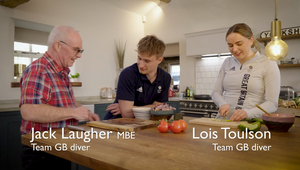
Thought Leadership: The Marketing Possibilities of a Cricket World Cup

Alongside basketball, cricket has perhaps the strongest claim to being the world’s most popular sport behind football.
With nearly a quarter of the planet’s population living in the cricket-mad nations of India, Pakistan and Bangladesh, it is no surprise that commercial and marketing activity around this month’s Men’s Cricket World Cup in India is focused on the sub-continent.
The list of sponsors is a who’s-who of both domestic Indian brands such as MRF tyres, IndusInd Bank, Coca-Cola’s Thum’s Up brand and Royal Stag, owned by Pernod Ricard, as well as major global entities with substantial interests in the vast and growing Indian market including Mastercard, Emirates, Aramco and Oppo.
Long before Indian dominance of the sport, the Cricket World Cup tended to align with local sponsors in contrast to the FIFA World Cup or Olympics which were more successful in attracting global partners.
Until the late 90s, the competition enjoyed naming rights partners largely from the hosts’ home market.
England hosted the Prudential (insurance) World Cup in 1975, 1979 and 1983 events; India’s Reliance Industries sponsored the 1987 competition and, while the biggest clash in world cricket remained the Ashes, the World Cup was sponsored by Benson and Hedges in Australia and New Zealand in 1992 and Indian cigarette brand Wills in 1996.
Since tobacco sponsorship of the sport went up in smoke, sponsors have been drawn by the huge TV audience the competition delivers across the sub-continent.
In fact, the scale of the opportunity across south Asia is giving the region, and India in particular, a disproportionate influence over the shape of the sport moving forward.
The Cricket World Cup remains the biggest prize in cricket (certainly for teams that don’t compete in the Ashes) and is the focal point for the 50 over, one-day format.
But the success of the (even shorter) T20 format has become the commercial powerhouse worldwide, driven by the incredible popularity of the Indian Premier League (IPL).
The high-paying IPL has become a magnet for the world’s best players and TV rights fees and sponsorship revenues have sky-rocketed accordingly.
The IPL’s franchise model has been recreated worldwide from the Caribbean Premier League to the Australian Big Bash. In South Africa, the SA20 features sides owned by existing IPL teams including MI Cape Town, where the acronym stands for Mumbai Indians.
T20 rather than the 50 over one-day format is also opening up new markets, notably in the middle east where the large number of migrant workers from the sub-continent guarantee cricket an audience.
But it is has also created an opportunity in a country which has long resisted non-endemic sports, including, until relatively recently, football. Or soccer as it is known there.
In June 2024, the Cricket World Cup’s junior sibling, the Men’s T20 World Cup will take place in West Indies and, more significantly for the future of the sport, the United States.
In addition to the traditional cricketing islands of Barbados, Antigua and Trinidad, the tournament will visit Dallas, Miami and New York.
The 50 over Cricket World Cup may still be the pinnacle of the sport for the majority of cricketing nations – India included – but the growth of the sport, both in audience terms and commercially, looks set to be powered by the shorter, T20 format.
Over the next six weeks, however, in packed stadia from Mumbai to Kolkata and Dharamshala to Chennai, fans will be going noisily berserk as their teams battle it out for cricket’s biggest prize.
As long as they do, brands will continue to be drawn to an audience that is arguably more engaged and more fervent than that of any other sport.
So, while tobacco sponsors have long since left the stage this Cricket World Cup still promises to strike a light amongst fans worldwide.















